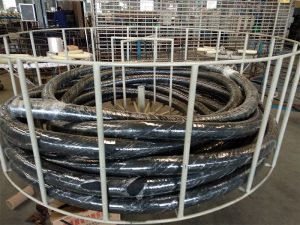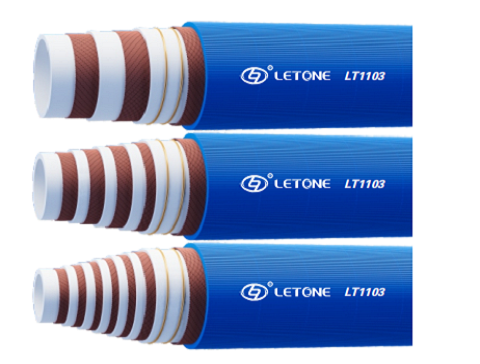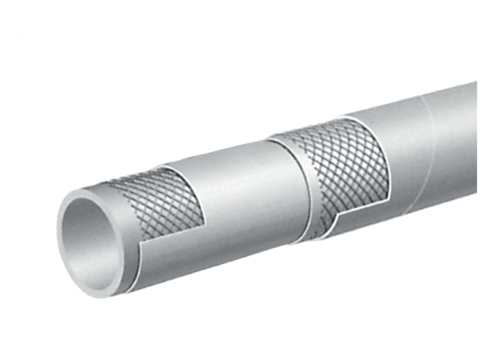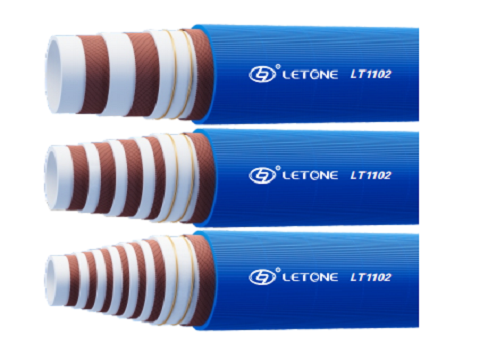Spiral winding is used to protect bundled wires and hoses from wear and tear. It is easy to install and provides a good fit around hoses or wires, working well in various environments.
Spiral hoses can handle higher pressures and do not experience pressure drop like braided hoses. They can also withstand high pulses and work in cold temperatures, making them an excellent choice for Snowplow and other winter equipment.
How to extend the service life of wire wound hose assemblies
The type of hose and its usage may affect the lifespan of the assembly. Frequent oil changes and maintaining a clean environment are important steps to extend the lifespan of hoses. It is equally important to ensure that all components of the hose are compatible.
Metal hoses may be subject to various types of corrosion, depending on their type and conditions. Chemical erosion, oxidation, fatigue cracks, and twisting can all lead to premature failure. These issues can be avoided by using the correct hose alloy for the application.
Spiral hydraulic hoses are usually more rigid than braided hoses and can handle higher pressures. This makes them a good choice for applications that require high pulse or wear. Compared to other types of hoses, they are also less prone to corrosion.
For example, the SAE 100R12 four wire spiral hydraulic hose has a maximum pressure of 6500 psi, making it an ideal choice for heavy-duty equipment and earthmoving machinery. The rubber sleeve is resistant to wear, chemical attack, and easy to clean. It can resist severe cold, so it is an ideal choice for Snowplow and tractors. It has an internal configuration with a spiral "backbone" to prevent twisting. This also supports full vacuum service.
Reasons for Inner Layer Fracture of Steel Wire
 Spiral hose is designed for high-pressure applications such as petroleum and water-based hydraulic systems. They can operate at temperatures ranging from -40 to+302 degrees Fahrenheit and can withstand pressures up to 6500psi. They have high wear resistance and excellent pulse life. This makes them ideal for heavy equipment and vehicles such as Snowplow and tractors.
Metal hose components may fail due to various reasons. Improper application - using hoses for non designed purposes; Excessive use - exceeding the design pressure limit; And environmental conditions - corrosion and temperature exposure. The hose alloy should also be matched with chemical media to ensure compatibility.
Another common cause of failure is pressure rupture. This is usually caused by constant or pulsating pressure that exceeds the alloy's Fatigue limit. The stress cracks generated on the surface of the oxide film make it susceptible to corrosion. Another possible cause of corrosion is the turbulence of abrasive chemicals on the alloy surface. This type of corrosion is called erosion corrosion and can be reduced by reducing fluid velocity or lining hose components with protective gaskets.
Main raw materials used for manufacturing wire wound hose assemblies
Polytetrafluoroethylene (PTFE): An extruded polymer with high durability, flexibility, and corrosion resistance. It comes in various thicknesses, diameters, and colors. It can also be used as a sealant. Polytetrafluoroethylene has high chemical and heat resistance, as well as oil, acid, and alkali resistance. It is also very easy to operate and can be welded through fusion welding.
ECTFE (Ethyl Chloride Fluorinated Ethylene): An extruded polymer similar to PTFE, but with higher thermal and electrical properties. It is very durable and is used in applications involving corrosive chemicals. It comes in different diameters, thicknesses, and colors.
Sleeve: A protective sleeve placed on a hose to protect it from harsh external environments such as high-temperature materials or traffic. Using anti-static products in hoses that will be exposed to static electricity is a good choice.
Spiral hose is designed for high-pressure applications such as petroleum and water-based hydraulic systems. They can operate at temperatures ranging from -40 to+302 degrees Fahrenheit and can withstand pressures up to 6500psi. They have high wear resistance and excellent pulse life. This makes them ideal for heavy equipment and vehicles such as Snowplow and tractors.
Metal hose components may fail due to various reasons. Improper application - using hoses for non designed purposes; Excessive use - exceeding the design pressure limit; And environmental conditions - corrosion and temperature exposure. The hose alloy should also be matched with chemical media to ensure compatibility.
Another common cause of failure is pressure rupture. This is usually caused by constant or pulsating pressure that exceeds the alloy's Fatigue limit. The stress cracks generated on the surface of the oxide film make it susceptible to corrosion. Another possible cause of corrosion is the turbulence of abrasive chemicals on the alloy surface. This type of corrosion is called erosion corrosion and can be reduced by reducing fluid velocity or lining hose components with protective gaskets.
Main raw materials used for manufacturing wire wound hose assemblies
Polytetrafluoroethylene (PTFE): An extruded polymer with high durability, flexibility, and corrosion resistance. It comes in various thicknesses, diameters, and colors. It can also be used as a sealant. Polytetrafluoroethylene has high chemical and heat resistance, as well as oil, acid, and alkali resistance. It is also very easy to operate and can be welded through fusion welding.
ECTFE (Ethyl Chloride Fluorinated Ethylene): An extruded polymer similar to PTFE, but with higher thermal and electrical properties. It is very durable and is used in applications involving corrosive chemicals. It comes in different diameters, thicknesses, and colors.
Sleeve: A protective sleeve placed on a hose to protect it from harsh external environments such as high-temperature materials or traffic. Using anti-static products in hoses that will be exposed to static electricity is a good choice.







